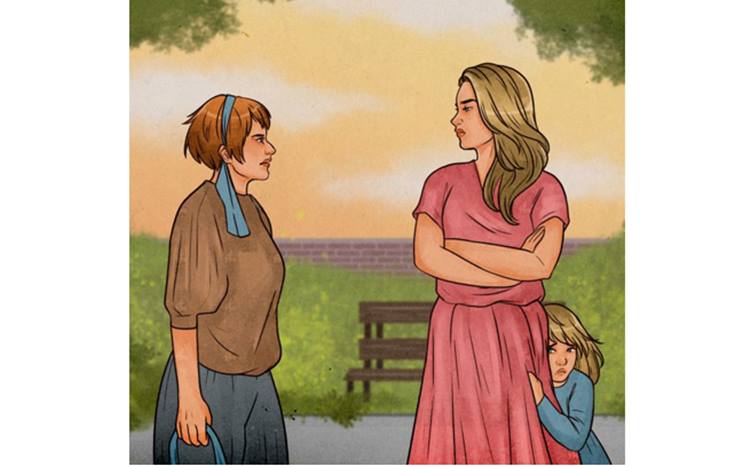Slap of the wrist. The phrase conjures up photos of a seemingly insignificant penalty, a light-weight contact within the face of doubtless severe misconduct. However what precisely does it entail, and what are the real-world implications? This exploration delves into the nuances of this often-misunderstood consequence, analyzing its effectiveness and the elements influencing its utility.
A “slap on the wrist” penalty typically feels insufficient, particularly when contemplating the potential penalties. For example, within the context of an organization’s efficiency, a seemingly minor infraction might have important ramifications if not addressed appropriately, like a lackluster response to the viral sensation “hit the quan dance” hit the quan dance. This typically highlights a broader systemic difficulty, requiring a extra substantial strategy than a easy slap on the wrist.
In the end, a “slap on the wrist” could be ineffective in stopping future issues.
The phrase “slap on the wrist” typically describes a penalty perceived as lenient. It suggests a scarcity of significant repercussions, presumably serving as a mere deterrent or a formality. Nevertheless, the precise influence can range significantly, relying on the context, the person, and the particular infraction.
A slap on the wrist is commonly inadequate punishment, particularly when contemplating the complexities of correct spelling, just like the difficult state of Oklahoma. Understanding how one can spell Oklahoma accurately, as detailed on this information how to spell oklahoma , highlights the necessity for extra substantial penalties in related instances. In the end, a extra impactful strategy is required to deal with such points successfully.
The phrase “slap on the wrist” evokes a way of lenient punishment, typically signifying a minimal penalty for a transgression. This idea, whereas seemingly simple, encompasses a variety of authorized contexts, from minor visitors violations to extra severe company offenses. Understanding the nuances of a “slap on the wrist” requires exploring the underlying authorized frameworks, potential motivations, and the broader societal implications.
A slap on the wrist, whereas seemingly gentle, can have surprisingly important repercussions. Think about the implications of such a light-weight penalty, particularly in gentle of the complexity of two letter phrases utilizing x, like “ox” or “ex”. In the end, the effectiveness of a slap on the wrist hinges on the particular context and the specified final result.
Defining the “Slap on the Wrist”
A “slap on the wrist” typically refers to a penalty that’s considerably much less extreme than the potential or anticipated punishment for the infraction. It implies a light-weight sentence, typically a high-quality, a brief interval of neighborhood service, or a verbal reprimand, reasonably than imprisonment or substantial monetary penalties. The notion of a “slap on the wrist” is very subjective and relies upon closely on the particular crime, the context of the case, and the expectations inside the related authorized system.
Elements Influencing the Severity of Penalties
A number of elements play a job in figuring out whether or not a penalty is taken into account a “slap on the wrist.” These embody:
- Severity of the offense: A minor visitors violation will probably end in a much less extreme penalty than a felony offense.
- Prior offenses: Repeat offenders might face harsher penalties than first-time offenders, even for related offenses.
- Mitigating circumstances: Elements akin to regret, cooperation with authorities, or a scarcity of intent can result in a lighter sentence.
- Particular authorized frameworks: Completely different jurisdictions and authorized techniques have various approaches to sentencing, influencing the perceived severity of a “slap on the wrist.”
- Public notion: The perceived equity and proportionality of the punishment can influence public opinion, doubtlessly influencing future sentencing selections.
Examples of “Slap on the Wrist” Penalties: Slap Of The Wrist
Examples of “slap on the wrist” penalties can vary from a parking ticket to a minor high-quality for a minor infraction. In some instances, this would possibly even embody a easy warning from a regulatory physique.
[Image: Table comparing slap of the wrist penalties for different types of offenses, across various jurisdictions]
The “Slap on the Wrist” in Company Contexts
The idea of a “slap on the wrist” extends past particular person felony instances to company contexts. In instances of company misconduct, a minimal penalty would possibly contain a hefty high-quality, however doubtlessly avoiding extra extreme penalties just like the dissolution of the corporate. [See also: Corporate Misconduct and Penalties]
The Debate Round Lenient Penalties
Using “slap on the wrist” penalties is commonly debated, with proponents arguing that such penalties are applicable for minor infractions and deter additional offenses. Conversely, critics argue that lenient penalties fail to adequately deal with the hurt brought on by the transgression and ship a message that wrongdoing is not going to be severely punished. The talk typically facilities on the stability between swift motion and proportionality in punishment.
A slap on the wrist typically feels inadequate, particularly when contemplating the potential penalties of sure actions. This sentiment is echoed within the context of “Wanda in Dwelling Coloration,” a latest exploration of societal influence ( wanda in living color ). The seemingly gentle punishment, nonetheless, ceaselessly fails to discourage future related conduct, highlighting the necessity for simpler deterrents and accountability measures in such conditions.

Influence on Deterrence and Rehabilitation
The effectiveness of “slap on the wrist” penalties in deterring future offenses is a posh difficulty. Whereas some argue {that a} gentle sentence would possibly deter minor offenses, others consider {that a} lack of great penalties can embolden wrongdoers. The influence on rehabilitation additionally will depend on the character of the offense and the specifics of the penalty.
Conclusion
The idea of a “slap on the wrist” is a multifaceted difficulty with important implications for varied authorized contexts. Understanding the elements that contribute to the perceived severity of a penalty, in addition to the broader societal impacts, is essential to comprehending this often-debated side of the authorized system. The dialogue of applicable responses to transgressions requires a balanced perspective that considers the severity of the offense, the context of the state of affairs, and the potential for deterrence and rehabilitation.
Excited by exploring different features of authorized penalties? [See also: Understanding Different Types of Legal Penalties]
Have questions on particular instances or the influence of lenient penalties? Go away your feedback beneath.
Share this text to unfold consciousness about this necessary matter.
In conclusion, whereas a “slap on the wrist” would possibly seem trivial, its influence could be surprisingly advanced. From deterring future infractions to shaping perceptions of accountability, the implications of this seemingly easy penalty lengthen far past the instant occasion. In the end, understanding the context and utility of such a penalty is vital to assessing its true significance.
FAQ Information
What are the several types of “slap on the wrist” penalties?
A “slap on the wrist” penalty typically appears disproportionate, particularly when contemplating potential long-term ramifications. For example, a medical situation like pyel o, a prefix referring to the kidney pyel o medical term , would possibly require important remedy, but a seemingly minor infraction might end in an analogous final result. This highlights the necessity for a extra nuanced strategy to such penalties, contemplating each instant and long-term penalties.
The time period encompasses a broad vary of penalties, from verbal warnings and minor fines to suspension of privileges. The precise type relies upon largely on the governing physique and the character of the infraction.
How efficient is a “slap on the wrist” as a deterrent?
The effectiveness of a “slap on the wrist” as a deterrent is debatable. Whereas it’d deter some people, others might understand it as a mere formality, failing to instill a significant sense of accountability.
Can a “slap on the wrist” result in extra severe penalties later?
Doubtlessly, sure. Repeated offenses, even these initially met with a “slap on the wrist,” might escalate to extra extreme penalties or long-term repercussions.

How does the severity of the infraction affect the penalty?
The severity of the infraction performs an important position in figuring out the suitable penalty. A minor infraction will probably end in a much less extreme consequence in comparison with a extra severe violation.
